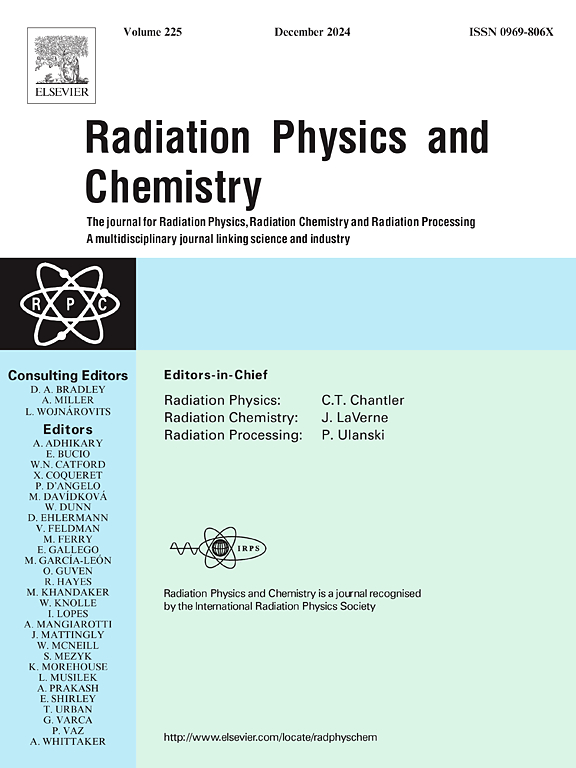Investigating the effect of magnetite ore and concrete curing time on the mechanical, environmental, and radiation characteristics of radiation shielding concrete (RSC)
IF 2.8
3区 物理与天体物理
Q3 CHEMISTRY, PHYSICAL
引用次数: 0
Abstract
This study aims to evaluate the effect of replacing magnetite with the main components of concrete (coarse- and fine-aggregates and cement) and the effect of concrete curing time on concrete's mechanical, environmental, and radiation protection properties. The research results showed that increasing the curing time improves concrete's compressive strength and mechanical performance. Replacing 20% of cement with magnetite in sample C led to a 10–24% decrease in compressive strength while replacing coarse aggregates with magnetite could increase compressive strength by 32%. Also, the replaced magnetite as the fine aggregates did not affect the compressive strength at 28- and 90-day processing time. Although increasing the mass percentage of magnetite leads to a decrease in compressive strength, this decrease is insignificant, and the compressive strength of samples containing magnetite is still higher than that of regular concrete. In evaluating protection indices, replacing magnetite with any particle size and mass percentage led to a 30–43% improvement in concrete performance against gamma rays. The most significant improvement was observed in samples with a 7-day curing period, where magnetite was used to replace two-thirds of the coarse and fine aggregates. Substitution of magnetite instead of cement improved protective properties to a lesser extent. Also, the use of magnetite did not significantly affect the environmental indicators of concrete, and no significant improvement was observed in these indicators.
求助全文
约1分钟内获得全文
求助全文
来源期刊

Radiation Physics and Chemistry
化学-核科学技术
CiteScore
5.60
自引率
17.20%
发文量
574
审稿时长
12 weeks
期刊介绍:
Radiation Physics and Chemistry is a multidisciplinary journal that provides a medium for publication of substantial and original papers, reviews, and short communications which focus on research and developments involving ionizing radiation in radiation physics, radiation chemistry and radiation processing.
The journal aims to publish papers with significance to an international audience, containing substantial novelty and scientific impact. The Editors reserve the rights to reject, with or without external review, papers that do not meet these criteria. This could include papers that are very similar to previous publications, only with changed target substrates, employed materials, analyzed sites and experimental methods, report results without presenting new insights and/or hypothesis testing, or do not focus on the radiation effects.
 求助内容:
求助内容: 应助结果提醒方式:
应助结果提醒方式:


